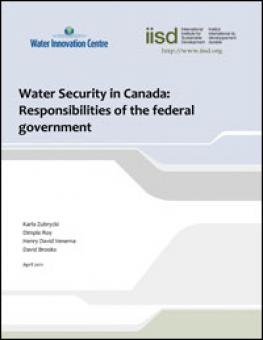
Water Security in Canada: Responsibilities of the federal government
In taking on the responsibility of governing Canada, the federal government agrees to a social contract—that it will protect Canadian citizens from harm and that they, in exchange, will give up some degree of freedom for this security.
In the Canadian Constitution, this social contract takes the form of the "peace, order and good government"(POGG) power bestowed upon the federal government. Canadians who elect a government to power have the right to expect the government to pursue actions that will maintain peace and stability in both the short and long-term. Water security is part of the social contract; the maintenance of social order and the well-being of citizens are tied to the adequate quantity and quality of water.
The Canadian Constitution does not delegate responsibility for water clearly to either the federal or the provincial governments. Disagreements and uncertainty around water responsibilities in Canada have led to irregular attention to water issues and left some concerns insufficiently addressed by either level of government.
Specific topics discussed in this report include fisheries and fish habitat, surface water monitoring, groundwater monitoring, pollution control, instream flows, boundary and transboundary waters, interprovincial waters, bulk water exports, navigation, water demand management, water on federal lands and drinking water.
This report discusses the confusion that has arisen in these key water security areas and suggests potential federal roles for each area. We assert that, in all areas, there are key roles the federal government must fill in order to guarantee a high level of water security to Canadians. The report also makes specific recommendations for how water security can be improved by the federal government.
Participating experts
You might also be interested in
Freshwater connectivity can transport environmental DNA through the landscape
A new study conducted at IISD-ELA found that the movement of water between freshwater bodies can transport eDNA which complicates the question of how accurately it can be used to monitor species.
Large Area Planning in the Nelson-Churchill River Basin (NCRB): Laying a foundation in northern Manitoba
This report explores two trends—the growing tendency towards large basin management and consideration of ecosystem services in decision making—for the northern portion of the Nelson-Churchill River Basin in Canada.
Large Area Planning in the Nelson-Churchill River Basin (NCRB): Laying a foundation in northern Manitoba (Summary)
This document summarizes a longer report that explores two trends—the growing tendency towards large basin management and consideration of ecosystem services in decision making—for the northern portion of the Nelson-Churchill River Basin in Canada.